Mexico City, or Ciudad de México (CDMX), has quickly become a top destination for digital nomads looking to expand their horizons and immerse themselves in a rich and multicultural environment. As the largest Spanish-speaking city in the world, Mexico City boasts a diverse range of business, artistic, and historical influences, creating a unique blend of traditional and contemporary settings. With more than 22 million inhabitants, it’s no wonder why digital nomads have increasingly flocked to this bustling metropolis, eager to take advantage of everything it offers.
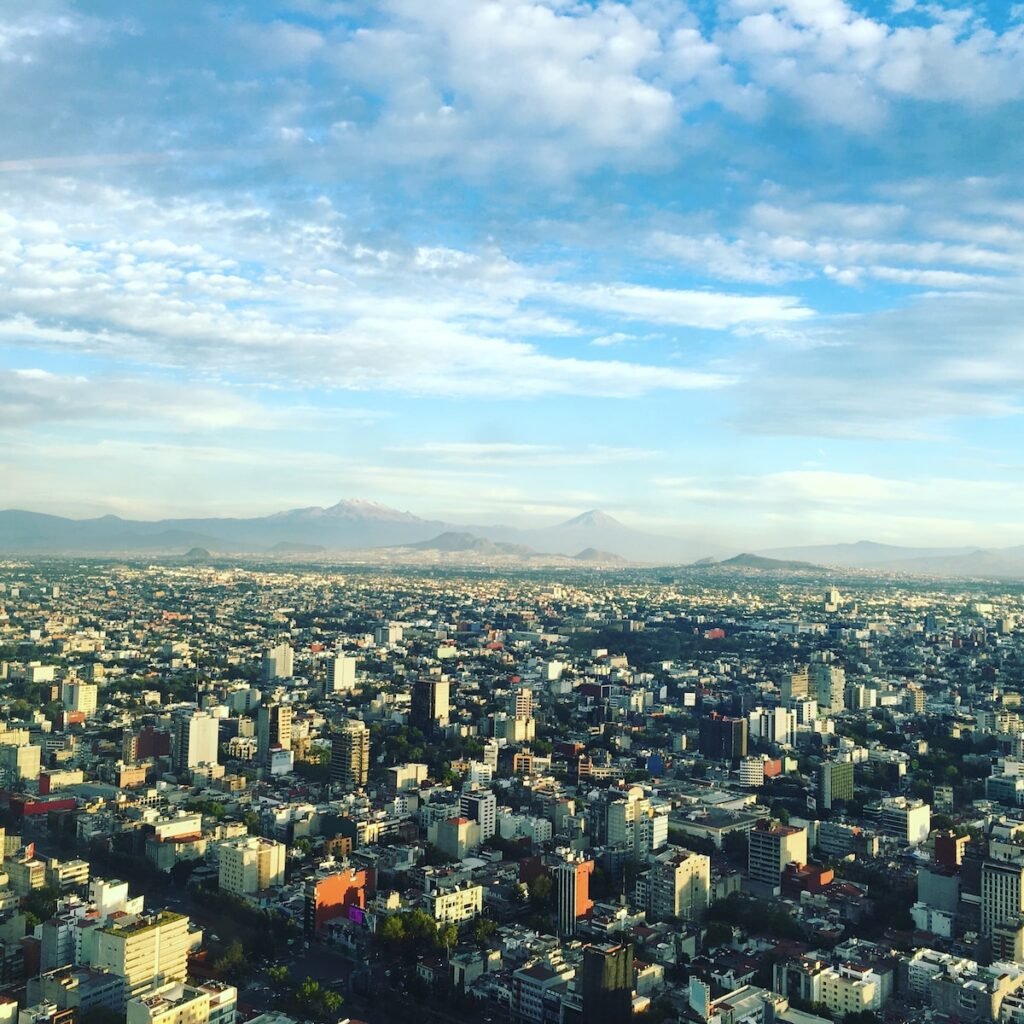
From the affordable cost of living to the burgeoning coworking and café cultures, Mexico City presents an attractive setting for digital nomads to settle down for a while. The city is known for its vibrant street life, fascinating history, and delicious cuisine, with countless opportunities to explore new places and make lasting connections. Public transportation and ride-sharing options make it easy to navigate around the city, while extensive green spaces provide the perfect spots to unwind in the midst of the urban jungle.
In this article, we’ll dive deeper into the world of digital nomads in Mexico City, exploring the best neighborhoods for remote work, popular coworking spaces, and a myriad of cultural experiences you won’t want to miss. Whether you’re a seasoned digital nomad or just starting your journey, Mexico City is bound to captivate your senses and enrich your remote working experience.
Why Mexico City for Digital Nomads
Mexico City has quickly become a popular destination for digital nomads, and it’s easy to see why. This bustling metropolis offers a unique blend of affordability, attractive neighborhoods, a rich cultural scene, and an abundance of amenities that attract remote workers from around the world.
One of the primary reasons digital nomads are drawn to Mexico City is its relatively low cost of living. Housing and daily expenses are significantly more affordable than in many other major cities across the globe. For instance, a one-bedroom studio or apartment can be found for less than $400 per month in certain areas like Narvarte and Napoles, making it a budget-friendly choice for nomads looking to stretch their income further (source).
Mexico City’s vibrant culture, with its blend of ancient history and modern urban life, offers endless opportunities for exploration and inspiration. Digital nomads can easily immerse themselves in the city’s rich arts, architecture, and culinary scenes, finding new experiences on every corner. From ancient Aztec ruins to contemporary art galleries, there is always something to satisfy one’s cultural curiosity.
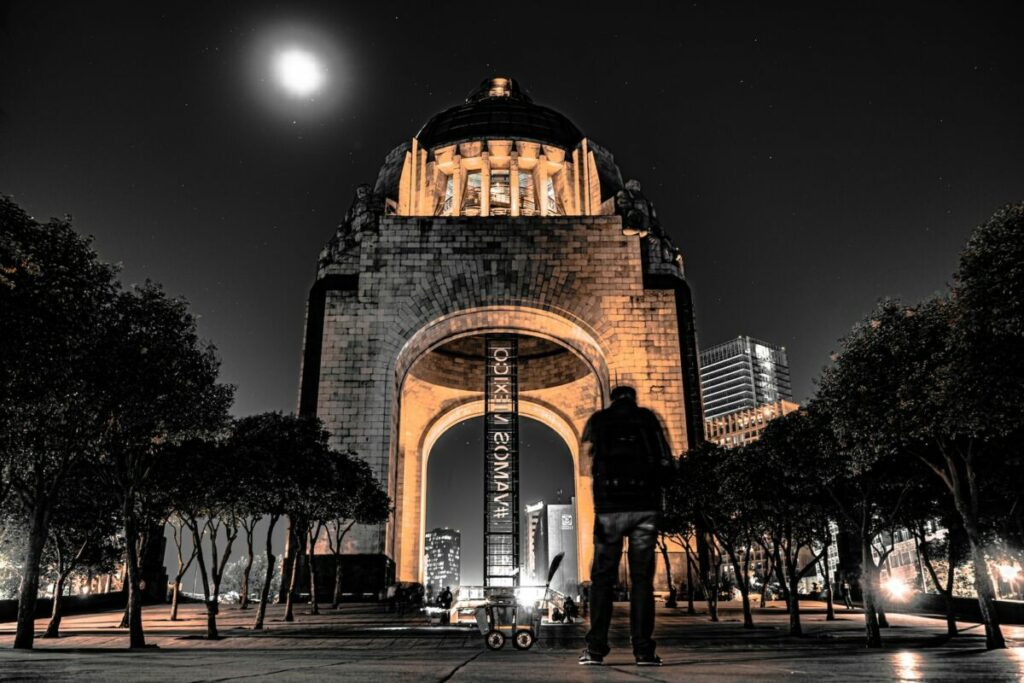
Ease of transportation is another factor that makes Mexico City an attractive location for digital nomads. The city boasts an extensive public transit system, including the metro, buses, and bike-sharing programs, which are relatively affordable and convenient. This makes it easy for remote workers to navigate the city and access everything it offers.
Food and nightlife are also significant draws for digital nomads in Mexico City. The city is well known for its mouthwatering cuisine, ranging from street food to gourmet dining. Furthermore, the city’s bustling nightlife scene includes various bars, clubs, and live music venues – perfect for after-work entertainment.
Regarding workspace options, Mexico City has no shortage of co-working spaces catering to remote professionals’ needs. These shared workspaces offer reliable internet access, ample workspace, and a sense of community among like-minded individuals. The city also has a large ex-pat community, making it easy for digital nomads to expand their social and professional networks.
Safety is a common concern among digital nomads, and Mexico City is generally considered to be a safe destination for remote workers. While some neighborhoods may require higher levels of vigilance, overall, the city takes the necessary precautions to ensure the safety of residents and visitors alike.
In conclusion, Mexico City offers a desirable blend of affordability, culture, transportation, food, nightlife, co-working spaces, and safety for digital nomads. Its thriving community of remote workers and ex-pats makes it an ideal location for those seeking both work and play.
Popular Neighborhoods
Condesa
Condesa is a trendy and artistic neighborhood in Mexico City, popular among digital nomads for its tree-lined streets, parks, and hip atmosphere. The area offers various cafes, co-working spaces, and restaurants, all within walking distance, making it ideal for remote work and food lovers alike.
- Popular amenities: Parque Mexico, boutique shops, diverse dining options, and galleries
Roma
Roma is another favorite among digital nomads and ex-pats, thanks to its lively energy and vibrant culture. Like Condesa, Roma offers an extensive selection of cafes, restaurants, and co-working spaces, attracting creative types and modern professionals.
- Highlights: Roma Norte, eclectic architecture, art galleries, and pop-up markets
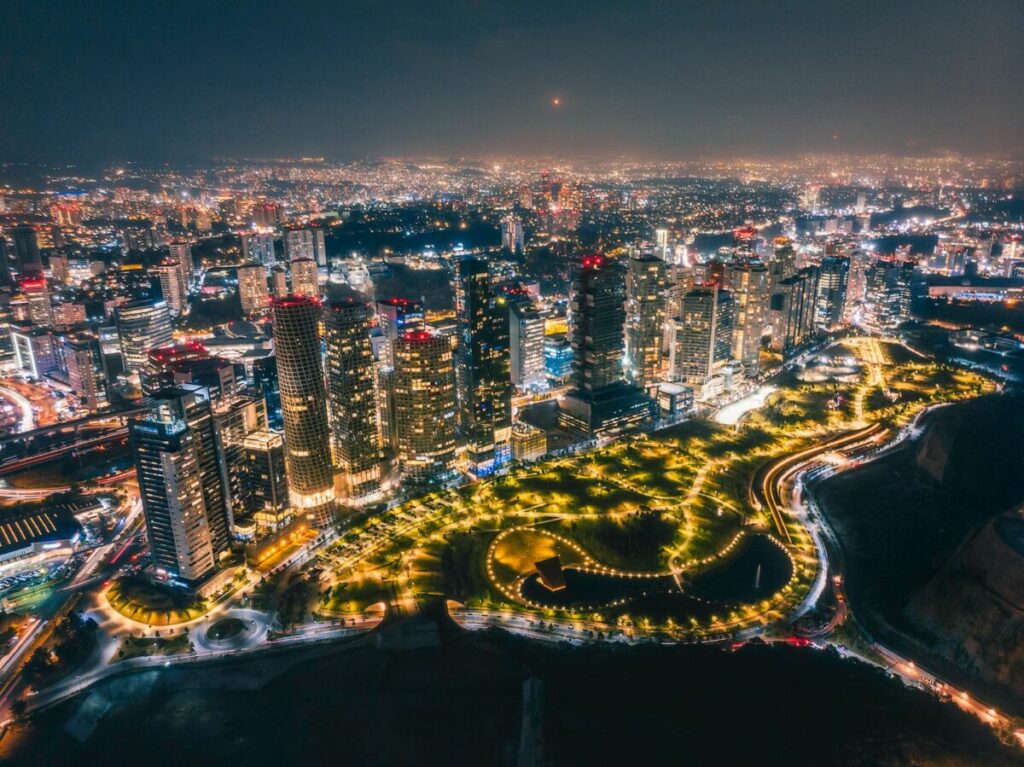
Polanco
As one of the most luxurious neighborhoods in Mexico City, Polanco offers digital nomads upscale eateries, designer boutiques, and high-end museums. This area is perfect for those seeking an upscale lifestyle while living and working abroad.
- Top attractions: Upscale shopping, Michelin-starred restaurants, Soumaya Museum, and Jumex Museum
Centro Histórico
Centro Histórico is the heart and soul of Mexico City, boasting a rich history, stunning architecture, and an abundance of cultural landmarks. Digital nomads can find affordable housing options and immerse themselves in authentic Mexican culture while exploring its UNESCO World Heritage sites.
- Landmarks: Zócalo, Palacio de Bellas Artes, Templo Mayor, Metropolitan Cathedral, and Torre Latinoamericana
Del Valle
Del Valle is a quieter residential neighborhood, attracting ex-pats and digital nomads with its more affordable living options and convenient access to essential amenities. This family-friendly neighborhood has earned its reputation for safety and comfort.
- Features: Parks, local markets, shopping malls, and easy access to public transportation
Coyoacán
Coyoacán offers digital nomads a taste of traditional Mexican charm, with cobblestone streets, colonial architecture, and quaint cafes. Home to the famous Frida Kahlo Museum and historical sites, Coyoacán is an excellent choice for remote workers seeking a slower pace of life and cultural immersion.
- Attractions: Frida Kahlo Museum, Viveros de Coyoacán Park, and traditional markets
Santa Fe
Santa Fe is a modern business district of Mexico City, home to many international corporations and high-rise apartments. This neighborhood gives digital nomads the opportunity to experience a more contemporary urban lifestyle, with convenient access to shopping centers, coworking spaces, and top-notch facilities.
- Advantages: High-tech office buildings, trendy restaurants, and luxurious shopping malls
Housing Options
Mexico City offers a variety of housing options for digital nomads, depending on your preferences and budget. In this section, we will discuss some of the popular options, including apartments, Airbnb’s, and other accommodations.
Apartments
Apartments are common for digital nomads seeking long-term housing in Mexico City. There are multiple options suitable for different budgets and neighborhoods. You can find furnished or unfurnished apartments, depending on your needs. To search for apartment rentals, you can use websites like Expats in Mexico or local Facebook groups such as Mexico City Housing.
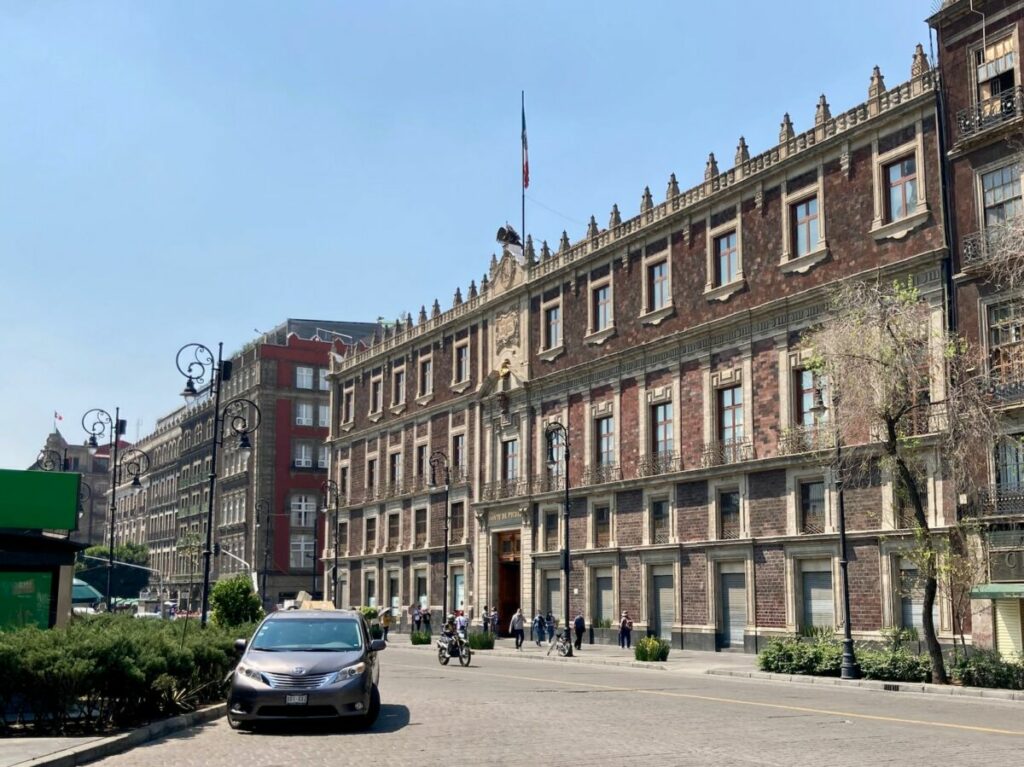
Airbnb
Airbnb is a popular platform for short-term rentals and can be a great option for digital nomads who are new to Mexico City or prefer the flexibility of temporary accommodation. Many hosts offer discounts for stays longer than a month, making it an affordable option for an extended stay. Airbnb rentals can be found throughout the city, so you’ll have no trouble finding a place that suits your preferences and needs.
Coliving Spaces
Coliving spaces, such as Covive and U-Co Juarez Coliving, provide a unique housing experience that combines the benefits of shared living with the convenience of a fully-furnished rental. These spaces often include amenities such as high-speed internet, coworking areas, and community events, making them an ideal choice for digital nomads seeking a sense of community and networking opportunities.
Rents
Rents in Mexico City can vary significantly depending on factors such as the neighborhood, size of the unit, and available amenities. In general, popular neighborhoods for digital nomads, such as Roma, Condesa, and Polanco, tend to have higher rents than residential areas. It’s essential to research and compare different options to find a place within your budget. An average one-bedroom apartment in a central neighborhood may cost between $600 to $1,200 a month, while a two-bedroom apartment can range from $1,000 to $2,000 per month.
When considering your housing options as a digital nomad in Mexico City, it’s essential to explore various areas, compare prices, and prioritize the amenities that are most important to you. With numerous options available, you will surely find the perfect fit for your lifestyle and preferences.
Available Amenities
Mexico City offers an array of amenities that cater to digital nomads. The city has diverse neighborhoods with varying characteristics, allowing digital nomads to choose what suits them best. Some popular neighborhoods include Roma and Santa Maria La Ribera, known for their walkability, tree-lined streets, and friendly communities.
Mexico City is home to numerous cafés and coworking spaces that provide reliable wifi, making it convenient for digital nomads to work remotely. Many of these spaces also host events, workshops, or meetups, allowing nomads to network and connect with like-minded individuals.
When it comes to dining, Mexico City offers a wide selection of both authentic Mexican and international cuisine at various price points. From street food vendors to high-end restaurants, digital nomads can find options that fit their budgets and tastes. Additionally, many bars and nightlife spots cater to different preferences, from local cantinas to trendy rooftop bars, allowing nomads to unwind after work.
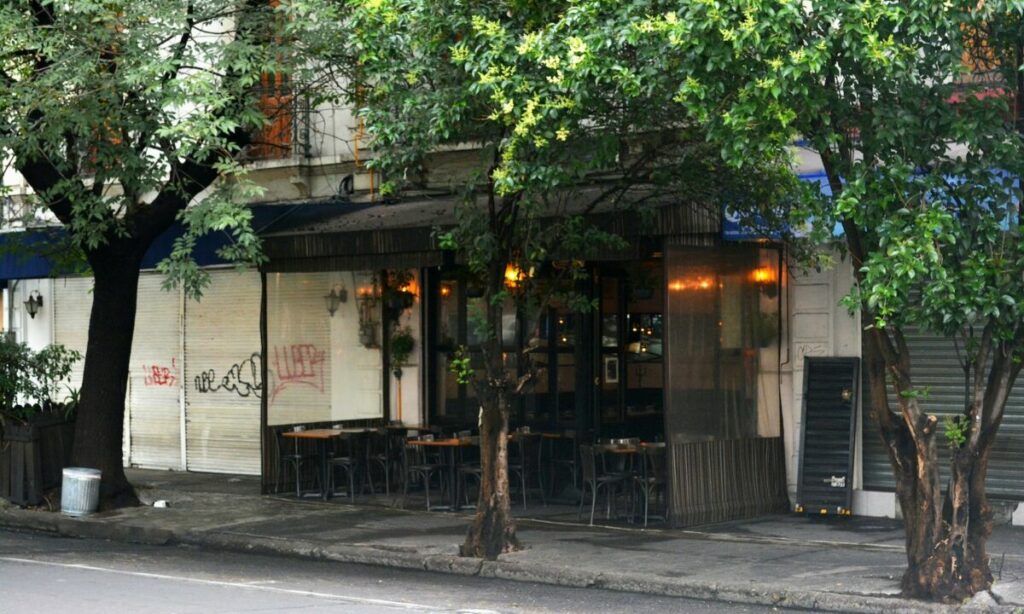
Culturally, Mexico City is rich in history and traditions. The city boasts numerous museums that showcase Mexican and international art, as well as UNESCO World Heritage sites, such as the historic center and the archaeological Zone of Xochimilco. Street art is also widespread throughout the city, adding color and creativity to its urban landscape.
For those active on social media, there are various Facebook groups for ex-pats and digital nomads in Mexico City, which can serve as a valuable tool for recommendations, events, and meeting new people.
In summary, Mexico City offers a wide range of amenities and experiences for digital nomads. The city’s affordable cost of living, diverse neighborhoods, thriving food scene, cultural richness, and reliable connectivity make it an attractive destination for living and working remotely.
Co-working Spaces and Remote Work
Mexico City is an increasingly popular destination for digital nomads, offering a vibrant culture, affordable living, and a diverse range of co-working spaces. With options to suit various needs and preferences, these spaces provide a comfortable environment to work from, expand your network, and explore the city.
One of the top co-working spaces in Mexico City is El 3er Espacio. It offers a friendly atmosphere, high-speed internet, and various membership options, including private offices and dedicated desks for those looking for a stable work setup. The inviting communal spaces encourage networking and collaboration among remote workers from various industries.
Another excellent option is Homework, which prides itself on offering a professional workspace with a focus on productivity. They provide various membership plans, spacious workstations, and options for private offices. It’s ideal for digital nomads who prefer a more structured, office-like environment.
For those who enjoy combining work with relaxation, The Pool is a top choice. Along with all the essentials like high-speed internet and ergonomic chairs, this co-working space is famous for its outdoor pool area, where members can take a break, socialize, or participate in events. The ambiance at The Pool fosters creativity and collaboration by providing a unique work-play balance.
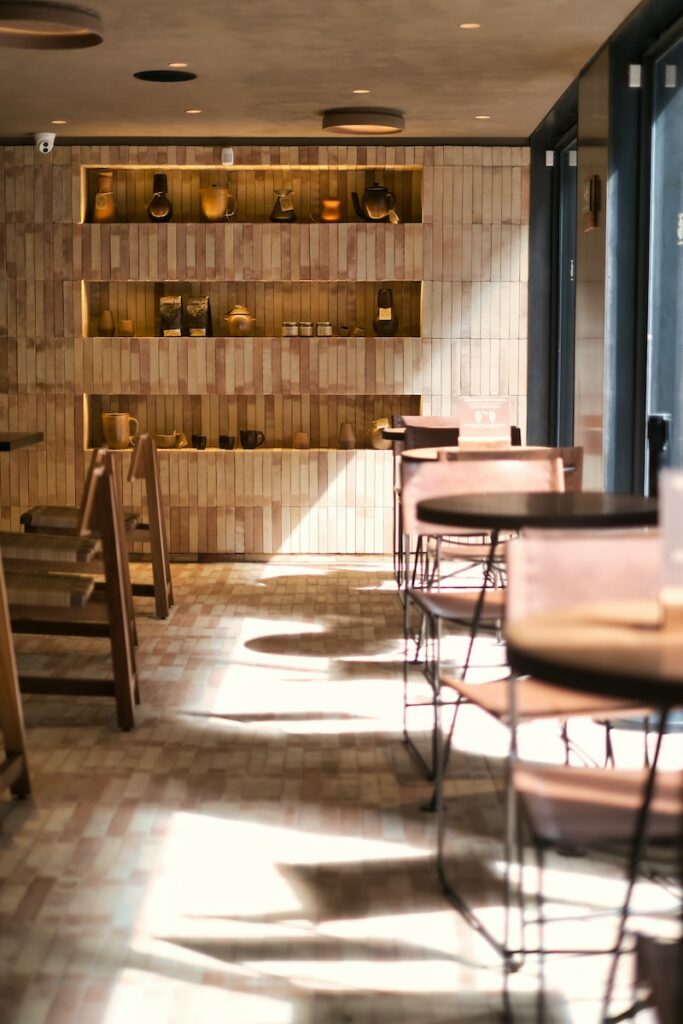
Digital nomads who prioritize being close to cafes, restaurants, and transportation links can consider Coffice in the bustling Roma Norte neighborhood. Besides its strategic location, Coffice is known for its cozy vibe and supportive community, making it the perfect spot for remote workers looking for networking opportunities.
To summarize, some of the top co-working spaces in Mexico City include:
These spaces cater to remote workers, offering various amenities, networking opportunities, and unique atmospheres. Be sure to explore these options while planning your digital nomad adventure in Mexico City.
Language and Communication
Mexico City is a culturally rich and bustling city, where language plays an important role in successful communication with locals. In this section, we will discuss the prominence of Spanish and English in Mexico City, and how digital nomads can navigate these languages in their interactions.
Spanish is the primary language spoken in Mexico, including Mexico City. Most of the country uses Spanish as their main mode of communication. It is crucial for digital nomads to have at least a basic understanding of Spanish phrases and words for daily activities, such as shopping, ordering food, and getting directions. Nonetheless, learning some Spanish will not only be helpful in practical situations but also enhance the digital nomad experience by fostering deeper connections with the local community.
On the other hand, English is increasingly becoming widely spoken in Mexico City, particularly among its younger generation and the business community. Many digital nomads can expect to find a growing number of native English speakers and people who communicate in other languages, as the city attracts more international expats and businesses. However, it should not be assumed that everyone can communicate in English, and relying solely on English may create limitations.
In addition to its role as a staple language, English has also become an essential skill for many gig workers in Mexico City, who are now catering to the needs of digital nomads by learning English and adjusting their services to accommodate the international clientele better.
While Mexico City offers an overall pleasant experience for digital nomads, one potential downside is the city’s low English levels. Digital nomads should be prepared for situations where they may not be able to rely on English for communication. In these cases, knowing some basic Spanish or having a translation app handy can be invaluable.
In conclusion, both Spanish and English play significant roles in the linguistic landscape of Mexico City. Digital nomads should invest time in learning some basic Spanish, as it will enhance their interaction with locals and help them navigate everyday situations more easily. While English is gaining ground, particularly in the business and digital nomad community, being proactive in language learning will ensure smoother communication during their stay.
Transportation and Mobility
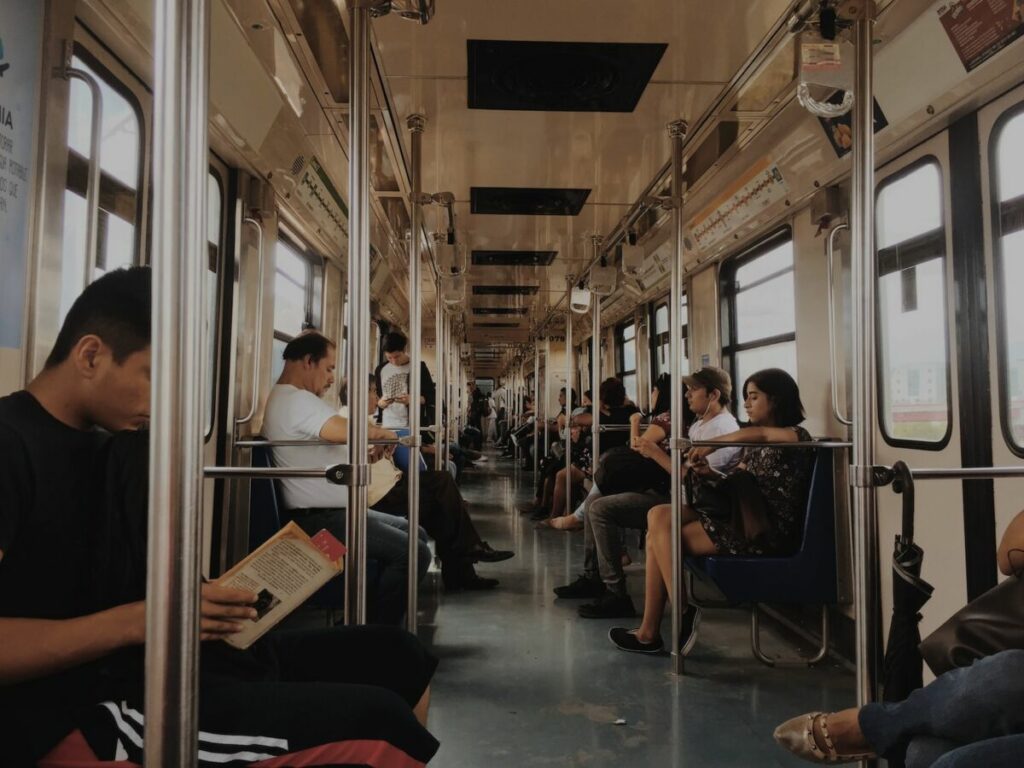
Mexico City offers a variety of transportation options for digital nomads, ensuring smooth mobility throughout the city. The extensive public transportation system includes buses, metro, and commuter trains, making it easy for visitors to travel between different areas of the city.
The Metro system in Mexico City is one of the largest in the world, with 12 lines covering over 200 kilometers of track. It is affordable and fast, with regular frequencies throughout the day. Using the Metro, digital nomads can easily access popular neighborhoods, coworking spaces, and other points of interest.
In addition to the Metro, the Metrobus system offers another efficient means of travel. These articulated buses run on dedicated lanes throughout the city, providing a comfortable and quick ride. Bus routes connect to Metro stations and other key destinations, ensuring comprehensive coverage within CDMX.
For those who prefer taxis, it is important to identify authentic and safe options. In Mexico City, you can find legitimate taxis with the following characteristics:
- Painted pink and white
- License plate numbers followed by letters A (free), B (site), or M (rural zones)
However, ride-hailing apps like Uber and DiDi are also popular and provide a convenient alternative, especially for digital nomads unfamiliar with the local language.
Another essential aspect of transportation for digital nomads is the city’s international airport. The Benito Juarez International Airport is the main gateway to CDMX, offering many flights from various parts of the world. This makes it easy for digital nomads to travel in and out of Mexico City for both work-related trips and leisurely getaways.
Safety and Security
Mexico City, also known as Ciudad de México, is an increasingly popular destination for digital nomads. While it offers many opportunities for remote workers, it’s essential to be aware of safety concerns and take precautions to stay safe in the city.
Although Mexico City has experienced a decline in crime rates in recent years, it still has some issues with crime and safety that need to be taken into consideration. Some areas are safer than others, with neighborhoods like Condesa and Polanco being considered as safe as many European cities1.
Pickpocketing and theft can be common, especially in crowded areas and on public transportation. To avoid falling victim to these crimes, always remain vigilant and keep your belongings secure. It’s a good idea to:
- Carry a secure bag, preferably with a zipper or hidden pockets.
- Keep your wallet and phone in your front pockets.
- Avoid wearing flashy jewelry or expensive accessories.
- Be cautious when using ATMs and choose ones in well-lit, busy areas.
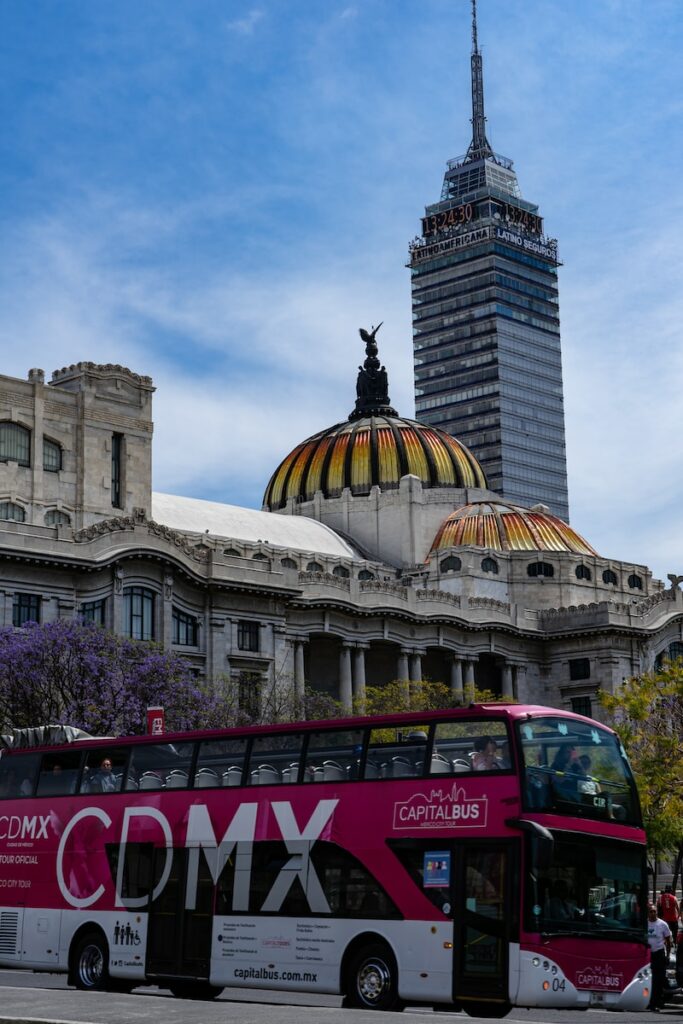
When it comes to transportation, Ubers are a popular and safe option for getting around Mexico City. They offer a cashless payment system, and you can track your journey through the app. Additionally, you can share your trip details with a friend or family member via Whatsapp to keep them informed of your whereabouts and ensure your safety.
In case you prefer to use taxis, it is crucial to identify authentic and safe taxis in the city. Make sure you’re boarding a legitimate taxi by checking for the following features:
- The vehicle must be painted pink and white.
- The license plate numbers must be followed by the letters A (for free taxis), B (for site taxis), or M (for rural zone taxis).
Lastly, be cautious when exploring Mexico City on foot, especially after dark. Stick to well-lit areas, avoid wandering alone late at night, and be mindful of your surroundings.
By staying informed, using common sense, and following these safety tips, digital nomads can enjoy a fulfilling and secure experience living and working in Mexico City.
Cost of Living
Mexico City offers an affordable cost of living for digital nomads. A single person’s monthly expenses can average around $1,574, while a family’s expenses can be around $4,110 per month. Of course, individual costs will vary based on your lifestyle and chosen accommodations.
When it comes to housing, a one-bedroom apartment in the city center ranges from $450 to $700 per month. If you prefer a more suburban area, the monthly rent will likely fall between $350 and $500.
The cost of living in Mexico City is 71% cheaper than in New York City. Here’s a breakdown of some common expenses:
- Housing: $450 – $700 for a one-bedroom apartment in the city center
- Groceries/Food: $285
- Dining Out: $300
- Transportation: $50
- Coworking Spaces: $170
- Entertainment: $150
- Travel Insurance/Healthcare: $84
In addition to housing, coworking spaces are an important consideration for digital nomads. Mexico City offers a variety of options, with monthly rates for a shared desk starting at $145 and private offices from $325. Some popular co-working spaces include The Pool, Público Centraal, El 3er Espacio, and IVO Business Center.
Inflation in Mexico City is worth considering as well. In recent years, the country has experienced moderate inflation rates, which can impact your cost of living over time. Keep an eye on current inflation rates to make sure your budget remains in line with local prices.
Finally, Mexico City has several expensive neighborhoods where the cost of living is higher than the city average. These highly sought-after areas often have a greater concentration of amenities, restaurants, and entertainment options. While these neighborhoods may be more costly, they can also provide a higher quality of living and networking opportunities for digital nomads.
Entertainment and Leisure
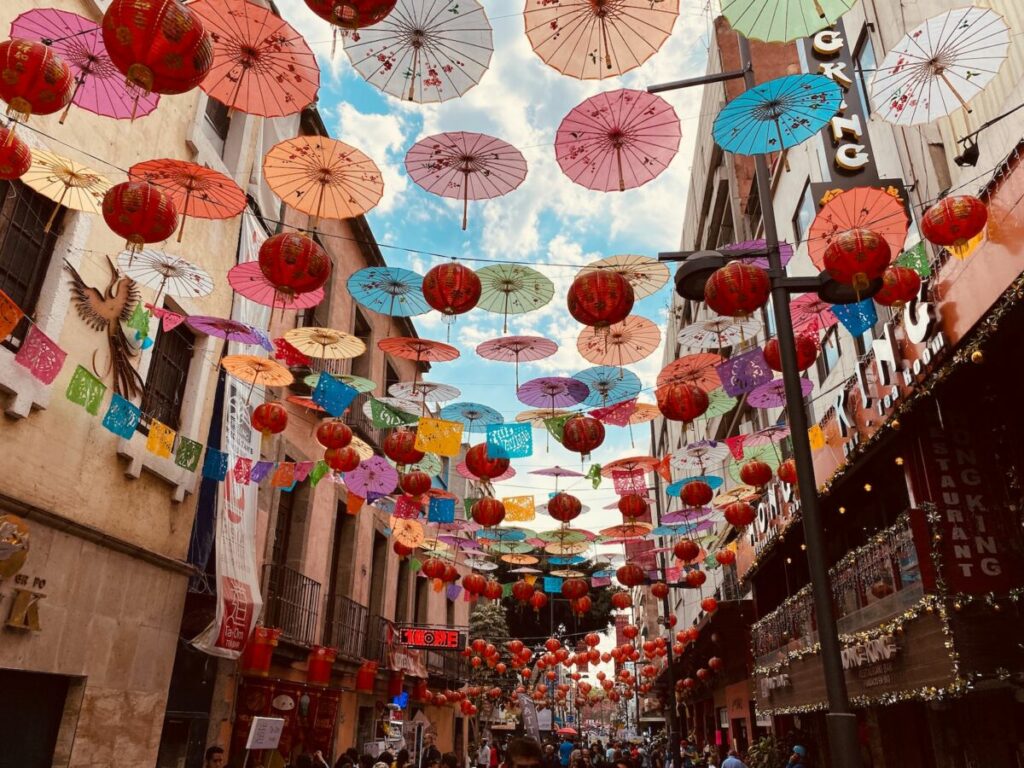
Mexico City offers a wide variety of entertainment and leisure activities for digital nomads, catering to various tastes and interests. It’s essential to explore and experience the vibrant culture of the city.
One of the main avenues for entertainment is the lively nightlife that Mexico City has to offer. From trendy bars to local pubs, the city has a diverse range of establishments that come alive after the sun goes down. Digital nomads can enjoy a fun and fulfilling night out in various neighborhoods, including the famous Zona Rosa and Condesa.
A notable area to visit for both entertainment and leisure is the elegant Reforma – a cultural and financial district in the city. Located along the famed Paseo de la Reforma, this area has fascinating architecture, inviting restaurants, and engaging museums, making it an excellent place to spend a leisurely day.
Chapultepec Park is a must-visit destination for those who appreciate nature and outdoor activities. It is the largest city park in Mexico and comprises forests, lakes, and various attractions, such as Chapultepec Castle, the National Museum of Anthropology, and the Modern Art Museum. The park provides an ideal setting for leisurely walking, cycling, or picnicking.
Food enthusiasts will not be disappointed in Mexico City, as the culinary scene is diverse and flavorful. Sampling street tacos is a must, with many street vendors offering delicious and authentic Mexican cuisine. Digital nomads can indulge in savory tacos made with various fillings, such as carnitas, al pastor, and barbacoa.
For vegans and vegetarians, Mexico City also has an array of vegan restaurants to choose from. These establishments serve mouth-watering plant-based dishes inspired by traditional Mexican recipes, offering a unique and satisfying dining experience.
In conclusion, Mexico City provides an exceptional range of entertainment and leisure opportunities for digital nomads. From nightlife to cultural experiences to culinary delights, there is something to suit every interest and lifestyle.
Visa and Residency Information
Mexico offers a friendly environment for digital nomads looking to work and explore the vibrant culture of Mexico City. Here’s essential information about visas and residency for digital nomads.

Tourist Visa
A majority of digital nomads may be able to stay in Mexico for up to six months using a tourist visa. This visa doesn’t have income requirements, and it’s granted on arrival for many nationalities. If your plan is to stay in Mexico City for a shorter period, the tourist visa might be sufficient for your needs.
Digital Nomad Visa
For those planning to stay longer and meet certain income requirements, Mexico offers a digital nomad visa. This visa allows remote workers to live and work in Mexico City legally. Keep in mind that the application process can take a few weeks to a couple of months, and you must apply for it while outside Mexico.
To be eligible for the Mexico digital nomad visa, you need to meet one of the following criteria:
- Have a bank balance of at least $43,000 for the last twelve months
- Earn an income of $2,595/month for the last six months (if bringing a dependent, this increases by $861 for each dependent)
To apply for the digital nomad visa, follow these steps:
- Schedule a visa appointment at a Mexican embassy or consulate in your country of origin or where you have residence
- Gather required documents, including proof of income or bank balance
- Complete the application form and attend the scheduled visa interview
Overall, Mexico City offers diverse options for digital nomads seeking a lively work environment and cultural experiences. Whether you’re planning a short-term stay or looking into longer-term residence options, Mexico’s visa and residency information should help you make an informed decision.
Other Mexican Cities for Digital Nomads
Tulum
Tulum is a popular destination among digital nomads for its beautiful beaches and laid-back atmosphere. With a growing ex-pat community, it has become a hub for remote workers who appreciate the mix of picturesque natural surroundings and modern amenities. It’s no wonder that it is among the 5 Best Digital Nomad Mexico Destinations.
Puerto Vallarta
Puerto Vallarta is located on the Pacific coast and offers a stunning seaside setting and a vibrant art scene. The combination of balmy weather, diverse culinary options, and a strong ex-pat community has turned Puerto Vallarta into a digital nomad hotspot.
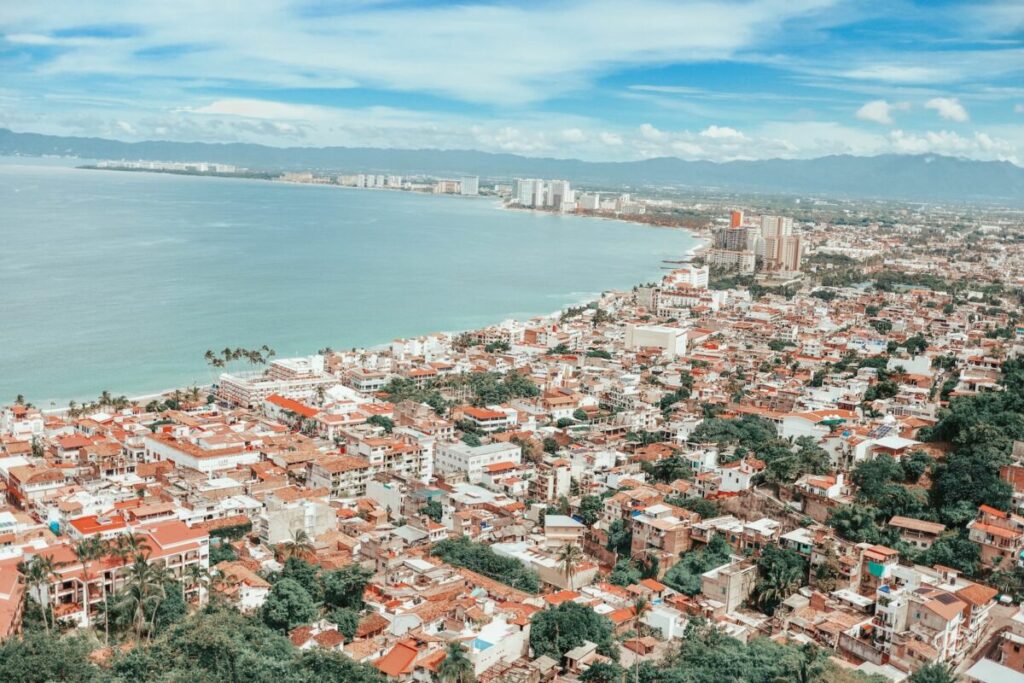
Playa Del Carmen
Often considered the most popular digital nomad city in Mexico, Playa Del Carmen boasts stunning beaches, a charming pedestrian area, and a thriving co-working scene. Its proximity to Cancun and Tulum makes it easy for digital nomads to explore the Riviera Maya or settle in for some focused work time.
Oaxaca City
Rich in history, culture, and culinary delights, Oaxaca City is another great option for digital nomads in Mexico. Its lower cost of living compared to popular coastal options allows remote workers to stretch their budgets further while enjoying a culturally immersive experience in one of the best cities for digital nomads in Mexico.
San Miguel de Allende
This UNESCO World Heritage city is known for its exquisite architecture and vibrant art scene. San Miguel de Allende’s charming cobblestone streets and unique cultural experiences – such as attending Dia de Los Muertos celebrations or the annual Balloon Festival – make it an appealing choice for digital nomads in search of a truly immersive Mexican experience.
Guadalajara
As Mexico’s second-largest city, Guadalajara offers digital nomads a more urban environment, thriving tech scene, and affordable cost of living. The city’s bustling downtown area, historic districts, and culturally rich attractions make it a popular spot for digital nomads seeking a combination of city life and cultural immersion.
Merida
Recognized as the safest city in Mexico for digital nomads, Merida combines colonial charm with modern amenities, making it a great option for those seeking a peaceful and secure environment in which to work. The city also offers convenient access to Mayan ruins, cenotes, and a sparkling coastline, perfect for weekend getaways and explorations.